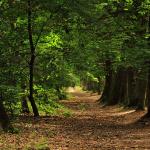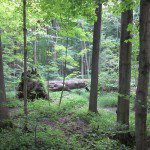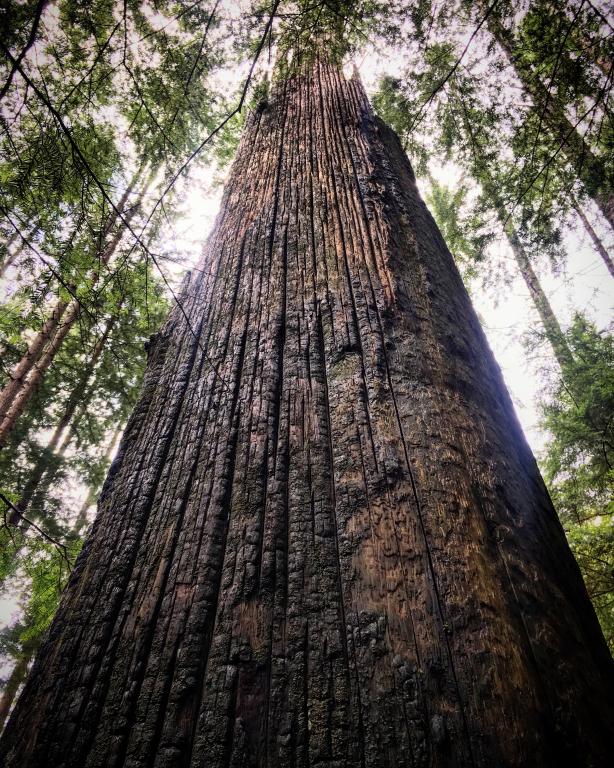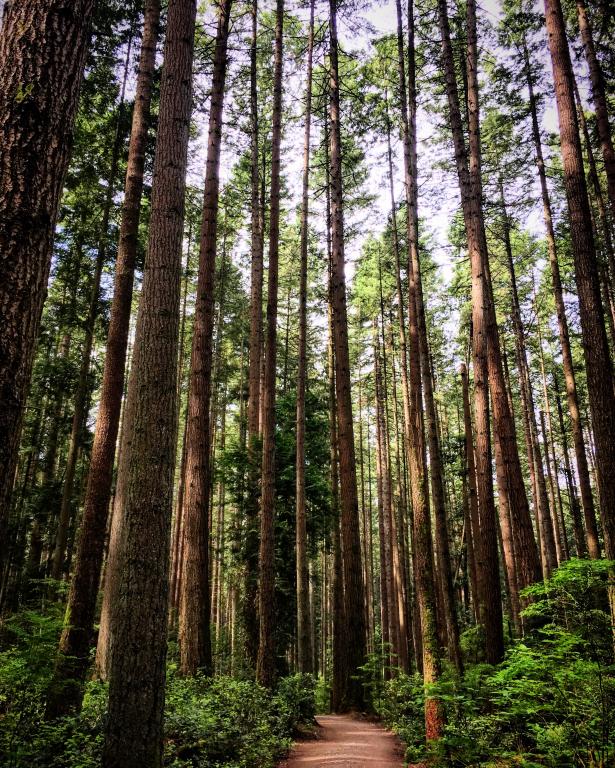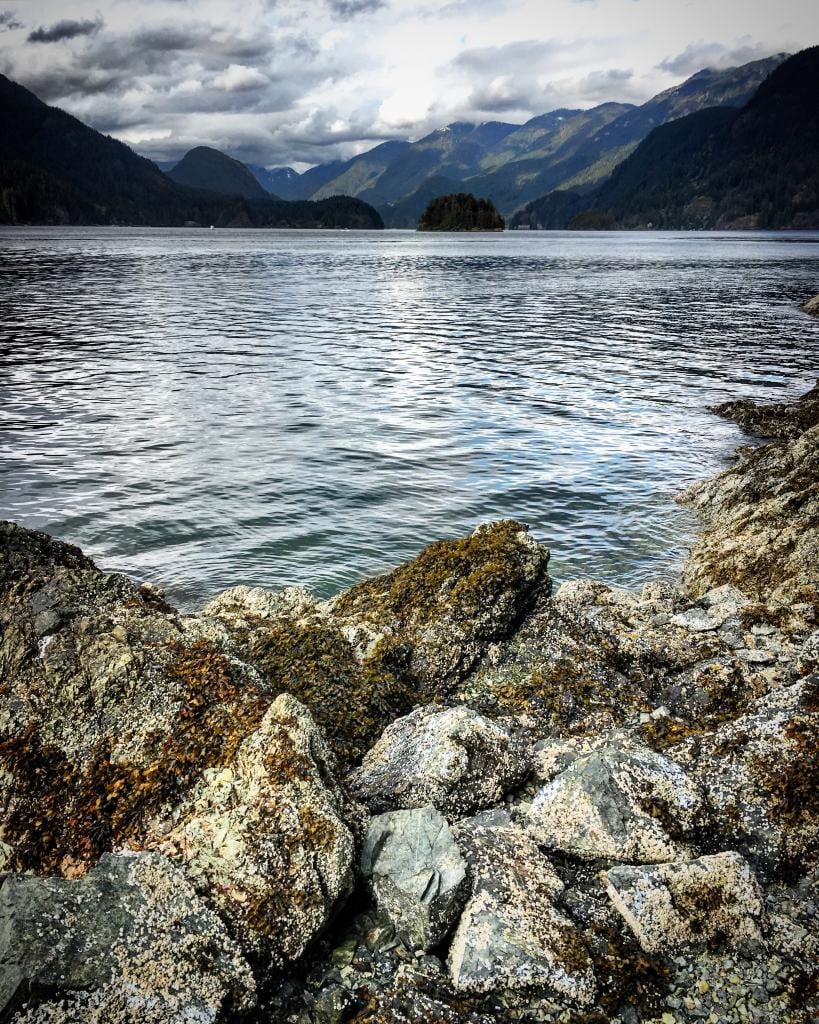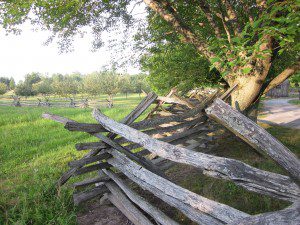
The Axis Mundi: A Forest Becomes Sacred
In addition to expressing a deep colonial longing for God’s presence and forgiveness, reassured through the domestication of wilderness; Joseph’s grove of trees taps into a deep history of sacred forests both in Western and non-western spirituality. Trees often mark the center of the world as the axis mundi. The Tree of Life in Judeo-Christian myth, the Yggdrasil of Norse cosmology and the Bodhi Tree of Buddhist lore all express this centering aspect (See Eliade 2001). In addition, almost all pre-Christian cultures such as the Druids, Celts, Romans, Greeks and Semitic peoples maintained sacred groves as sanctuaries for their deities and temples housing their sacred ritual.
What is now called the Sacred Grove by Mormons could be said to also function as an axis mundi of the Mormon experience. Although Mormonism migrated Westward, locating its current headquarters in Salt Lake City, thousands of Mormon pilgrims return to the grove each year to pay their respects to the sacred site, the place where heaven and earth met in the visionary experience of a young farm boy.
However, Joseph and his early followers did not make any provisions to protect the grove of his first vision. Joseph was not welcome in the Palmyra area for long and soon left. The Smith farm passed through nine different hands before it was purchased from farmer Seth Chapman by LDS Church President George Albert Smith in 1907 for $16,000. It is at this time that the grove is first referred to as “sacred” in the Church’s Journal History (Packer 1975). Early Mormons were mostly unfamiliar with Joseph’s first vision, and thus with the grove where it occurred; but it appears that there was at least some continuity of Joseph’s claims to having had a vision within Palmyra itself and even a tradition of the exact location where the vision occurred.
One evidence of this is that during the time between Joseph’s vision in 1820 and 1907, most of the acreage comprising the Smith property was cleared of forest; however in the northwest corner a seven acre parcel managed to survive destruction. In an interview with William Avery Chapman from 1920, son of Seth Chapman, he said of this remaining patch of towering trees:
…years ago my father sent for me….he said ‘I want to speak to you about the farm. I do not think I will live long and the farm will go to you. I want you to take good care of the grove [the seven acres]; I have never used an ax in the grove except to remove dead timber. I think it should be preserved for that is where Joseph Smith, the ‘Mormon’ prophet, had his first vision.’ Father died soon after this conversation and I have done as he wished, I have never used an ax in the grove except to remove dead timber (My emphasis).
Thus, Seth Chapman must have been managing the grove around the time New York set aside 6 million acres in the Adirondack Mountains in 1892, as he purchased the farm in 1875; making the Mormon Sacred Grove one of our earliest nature parks (albeit a small one). Avery Chapman continued this management by not harvesting timber or firewood and clearing dead and downed timber in order to prevent fire.
In all probability it is also with William Avery that the tradition of an exact location of Joseph’s vision began. This tradition placed Smith’s vision under a large sugar maple tree. Shortly after the purchase, Joseph F. Smith visited the spot. The missionary journal of William Rappleye dated 1913 also confirms this ongoing tradition of an exact location for the vision: “He [Willard Bean] was very kind to us and took us out…to see the sacred grove and pointed out the big tree J[oseph] Smith rec[eived] his first vision under. After taking a few pictures and getting a piece of bark off the tree for a souvenir we went back to Palmyra.”
The Smith farm and Sacred Grove had official caretakers in Willard and Rebecca Bean. Early on, Willard reported to have found a copper tablet attached to a tree on the outskirts of the grove that read “GO PRAY—AGAIN I COME”, repeated in Latin, marking the grove with holy significance. The Beans worked the Smith farm with little financial support from the LDS Church raising grains, beans, chickens, geese, horses, dairy cows, and sheep. They encountered strong resistance from the local community, who quickly formed an Anti-Mormon League. But Willard, a former prize boxer, was determined to stay and the Beans remained in Palmyra another 23 years, making many friends and a few converts. During their tenure, the farm and grove hosted returning missionaries on pilgrimage, Mormon apostles seeking solitude, and celebrations of the Mormon sacred calendar. When Mormon Apostle James Talmage visited the farm in 1923 he returned to the farmhouse visibly exhausted well after dark asking only for a piece of bread and some butter for supper. Before retiring, he whispered “oh the things I have seen and heard this day” (Packer 2007: 57). Whatever Talmage meant by this, the Sacred Grove clearly served as a continuing source of inspiration and possibly even mystical encounter for Mormon pilgrims. During this period, the grove was managed in a similar way as William Avery Chapman did before it was purchased by the Church, with dead limbs being removed and the understory remaining clean, like a park.
Be sure to like me on Facebook, and check out my photography gallery.

